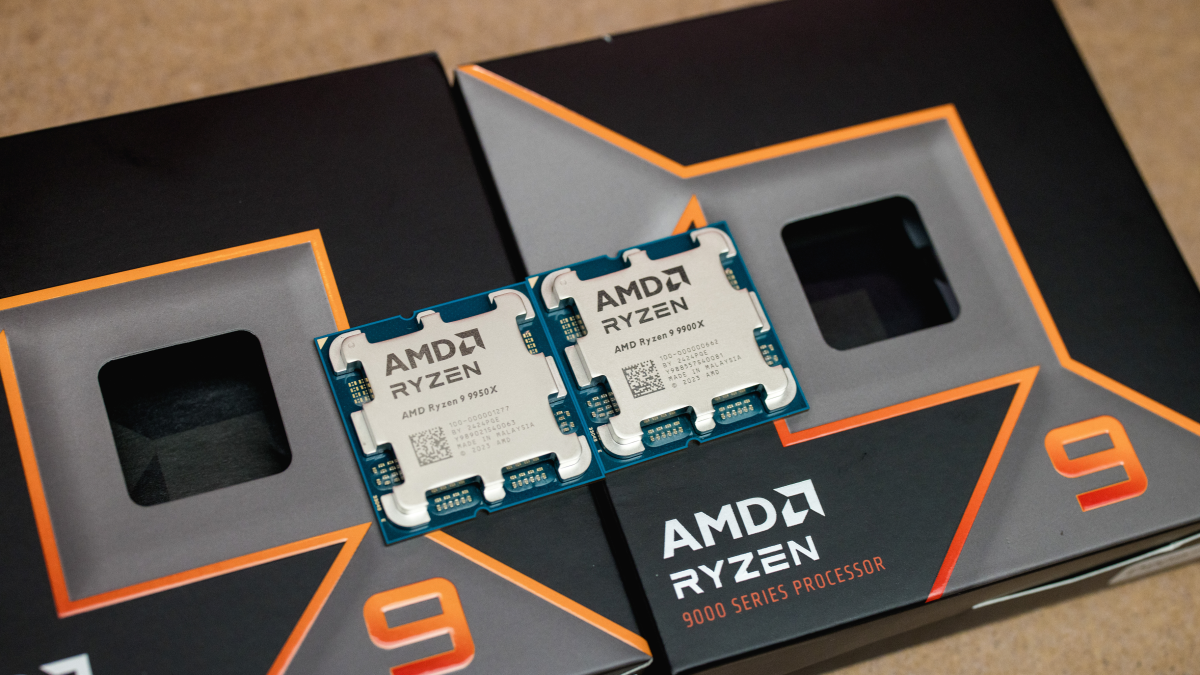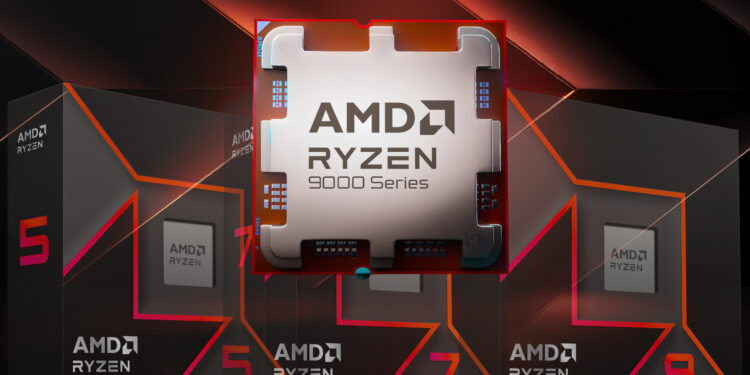In a striking development, AMD has rolled out BIOS updates promising significant performance enhancements and latency reductions for its Ryzen 9600X and 9700X processors. This comes as a breath of fresh air approximately one month after the initial underwhelming reviews of the Zen 5 desktop CPUs. Together with complementary Windows 11 updates, these improvements are setting a new standard for what users can expect from their computing hardware.

AMD’s Strategic Enhancements
AMD’s latest BIOS updates for AM5 motherboards, featuring the AGESA PI 1.2.0.2 firmware, are a game-changer. They are designed to address specific inefficiencies in how data transactions are handled across different parts of the processor. “We’ve managed to cut the number of transactions in half for this use case, which helps reduce core-to-core latency in multi-CCD models,” AMD reports. This optimization could mark a significant turnaround from the initial performance metrics that noted higher-than-expected core-to-core latency across the Ryzen 9000 series.

Power and Efficiency: The New 105-watt Mode
Further enhancing the allure, AMD introduces a new 105-watt cTDP option that increases the thermal design power capacity of the Ryzen 9600X and 9700X, without exceeding their originally validated specifications. This update promises around a 10% uplift in performance, particularly shining in multithreaded workloads, although gains in less-threaded applications are also anticipated. AMD assures users that this new mode maintains warranty coverage, provided that adequate cooling is implemented.

Future-Proofing with X870 and X870E Motherboards
The launch of AMD’s X870 and X870E motherboards coincides with these updates, available now at retailers. While not essential for operating AMD’s latest CPUs, these motherboards offer forward-looking technologies like USB 4.0 and simultaneous PCIe 5 Gen 5 support on both graphics and NVMe interfaces. Given the anticipated arrival of new PCIe Gen 5-compatible graphics cards, such as the rumoured RTX 5090, the timing couldn’t be better. AMD’s focus on future-proofing extends to supporting higher-clocked memory with DDR5-8000 EXPO on these boards, delivering latency improvements that further enhance performance.

Final Thoughts
AMD’s strategic BIOS updates are setting the stage for what appears to be a significant leap forward in desktop computing performance. By addressing initial criticisms head-on and coupling hardware enhancements with software optimizations, AMD is not only enhancing user experiences but also staking a firm claim in the competitive landscape of high-performance computing. This proactive approach may well redefine the benchmarks for what enthusiasts and professionals expect from their setups, ensuring that AMD remains at the forefront of technological advancement.










